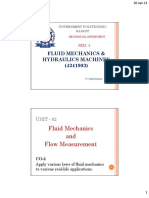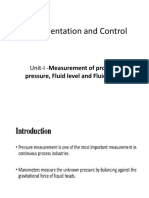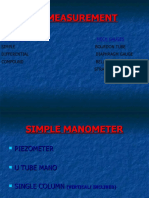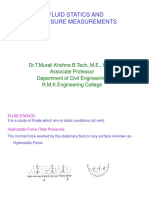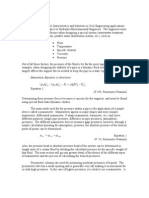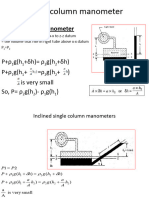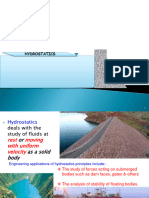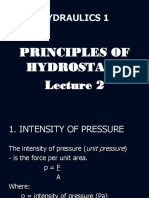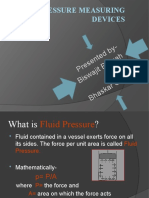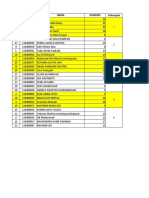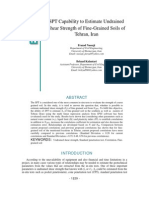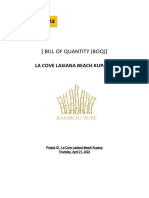0% found this document useful (0 votes)
81 views25 pagesEMM 2301 FLUID MECHANICS I Lecture 2
This document discusses fluid pressure and various types of manometers used to measure pressure. It begins by defining pressure and describing how pressure increases with depth in a fluid. It then explains different types of manometers, including simple manometers like piezometers and U-tube manometers, micro-manometers, and differential manometers. Specific examples like vertical and inclined column micro-manometers and upright and inverted U-tube differential manometers are provided. Rules for writing equations for different manometers are also outlined.
Uploaded by
patrick kipronoCopyright
© © All Rights Reserved
We take content rights seriously. If you suspect this is your content, claim it here.
Available Formats
Download as PDF, TXT or read online on Scribd
0% found this document useful (0 votes)
81 views25 pagesEMM 2301 FLUID MECHANICS I Lecture 2
This document discusses fluid pressure and various types of manometers used to measure pressure. It begins by defining pressure and describing how pressure increases with depth in a fluid. It then explains different types of manometers, including simple manometers like piezometers and U-tube manometers, micro-manometers, and differential manometers. Specific examples like vertical and inclined column micro-manometers and upright and inverted U-tube differential manometers are provided. Rules for writing equations for different manometers are also outlined.
Uploaded by
patrick kipronoCopyright
© © All Rights Reserved
We take content rights seriously. If you suspect this is your content, claim it here.
Available Formats
Download as PDF, TXT or read online on Scribd
/ 25
